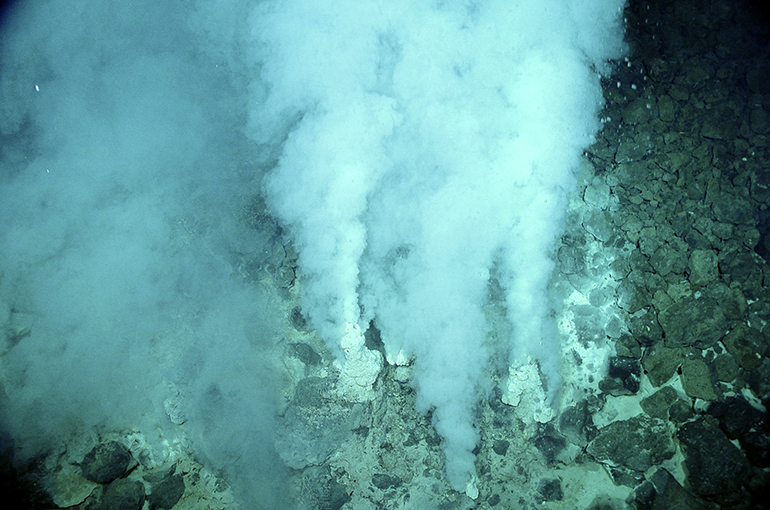 Chinese Scientists' Deep-Sea Hydrogen Discovery Could Unlock Clues to Life’s Origins
Chinese Scientists' Deep-Sea Hydrogen Discovery Could Unlock Clues to Life’s Origins(Yicai) Aug. 12 -- Chinese scientists have discovered a massive hydrogen-rich hydrothermal system deep beneath the Pacific Ocean, challenging existing geological models and offering new opportunities to study the origins of life, potential extraterrestrial ecosystems, and natural clean energy sources.
A team from the Institute of Oceanology at the Chinese Academy of Sciences used the manned submersible Strive to identify the Kunlun hydrothermal field beneath the western Pacific seafloor, according to a recent study published in US journal Science Advances.
Kunlun’s unexpected location and the scale of its hydrogen emissions could lead to new ideas in studies of biodiversity, planetary exploration, and natural energy resources.
Located about 80 kilometers west of the Mussau Trench on the Caroline Plate, the tectonically active site spans 11.1 square kilometers and contains 20 large craters, each hundreds of meters wide.
The researchers found that Kunlun emits an estimated 4.8×10^11 mol of hydrogen annually, accounting for at least 5 percent of global abiotic hydrogen output from all submarine sources. Abiotic hydrogen is molecular hydrogen generated through chemical or geological processes rather than by living organisms.
“The Kunlun system stands out for its exceptionally high hydrogen flux, scale, and unique geological setting,” said study author Sun Weidong. “It shows that serpentinization-driven hydrogen generation can occur far from mid-ocean ridges, challenging long-held assumptions.”
Serpentinization is a process in which iron-rich minerals react with water to produce hydrogen gas. Until now, it was most often associated with tectonic plate boundaries where constant mantle rock supply or high heat flow is present.
The discovery also reveals how life can thrive without sunlight. “What’s particularly intriguing is its ecological potential,” Sun said. “We observed diverse deep-sea life thriving here -- shrimp, squat lobsters, anemones, and tubeworms -- species that may depend on hydrogen-fueled chemosynthesis.” Hydrogen-fueled chemosynthesis allows organisms to create organic matter using molecular hydrogen instead of sunlight.
The researchers noted that alkaline, hydrogen-rich fluids at Kunlun may resemble early Earth’s chemical environment, providing a natural laboratory for studying how primitive life might have emerged. The findings could also guide the search for untapped submarine hydrogen resources.
Editor: Emmi Laine